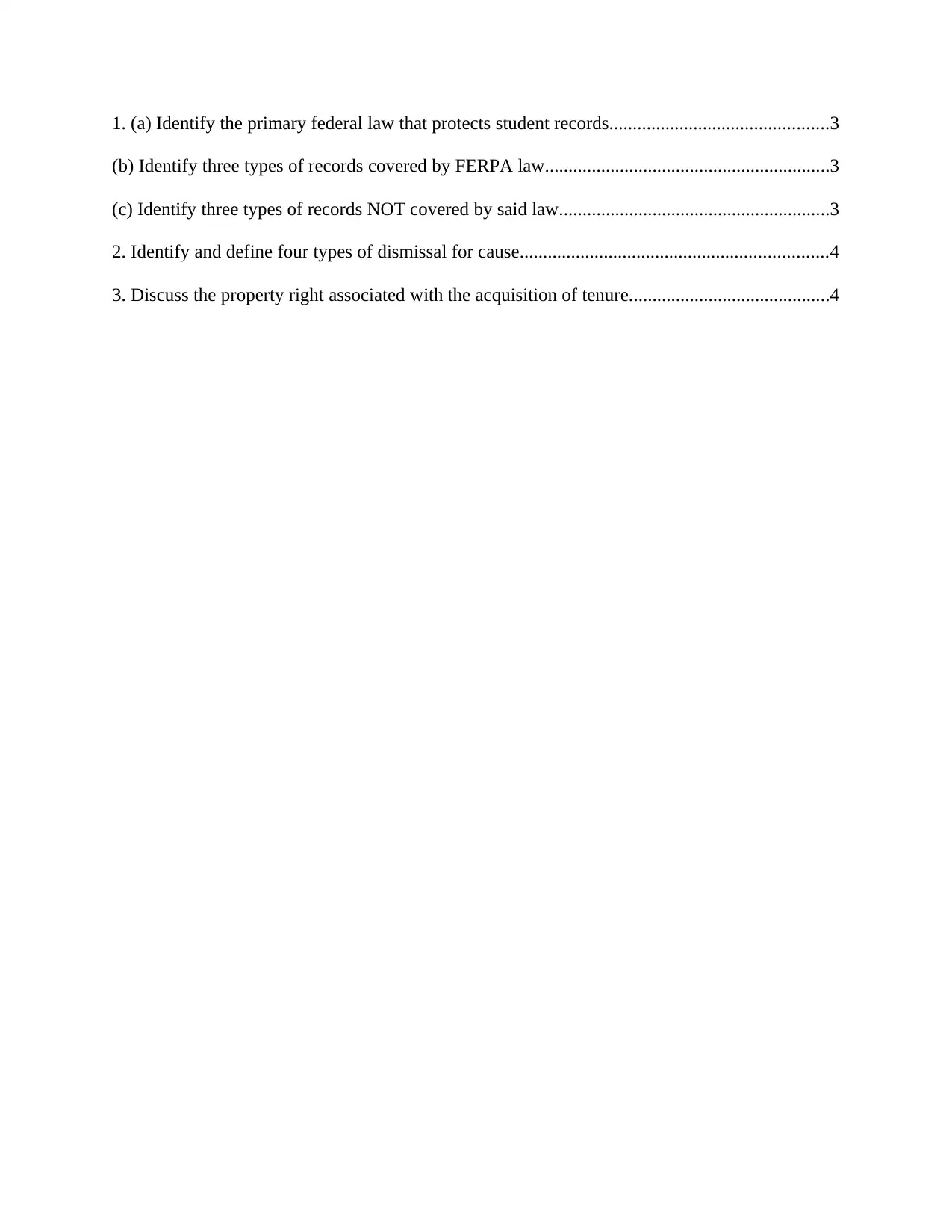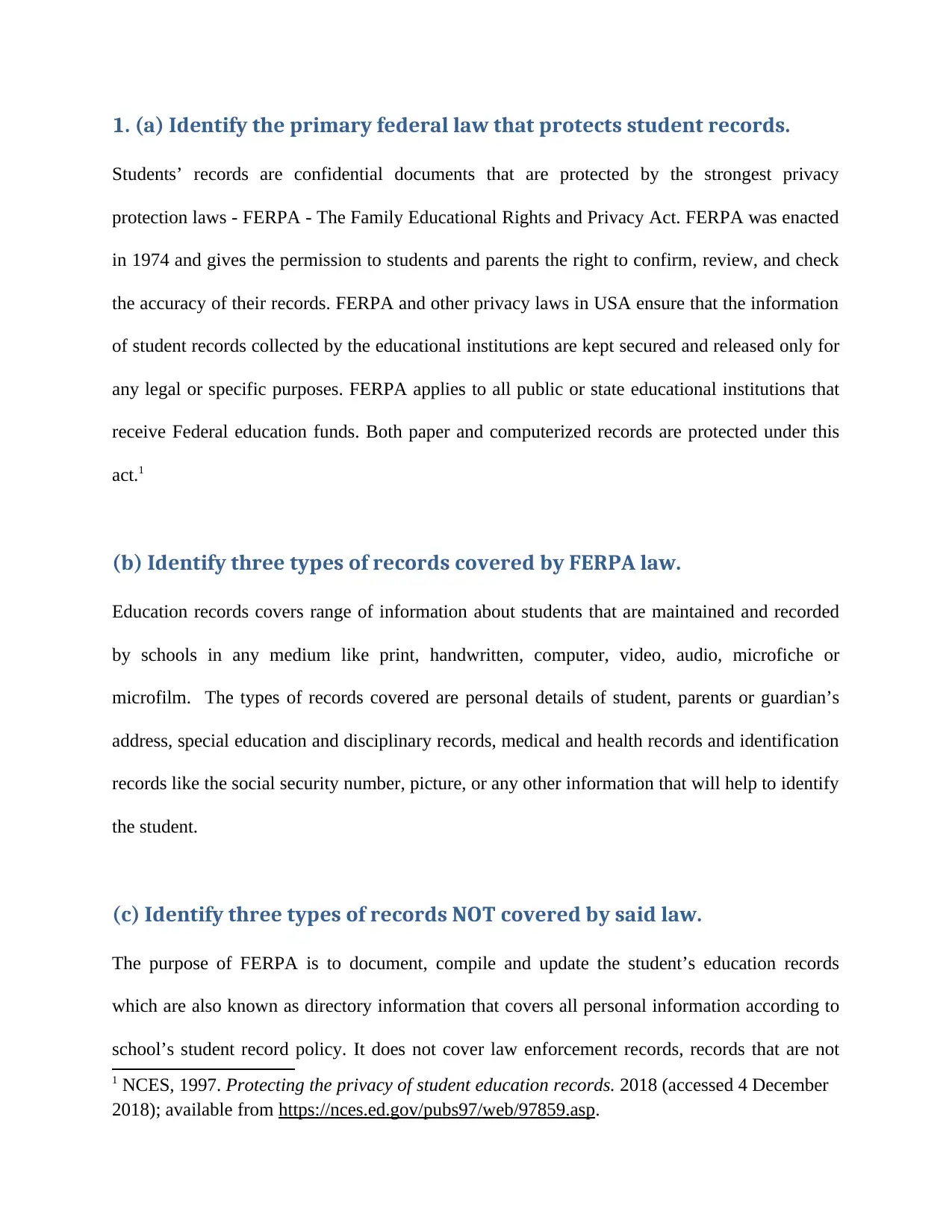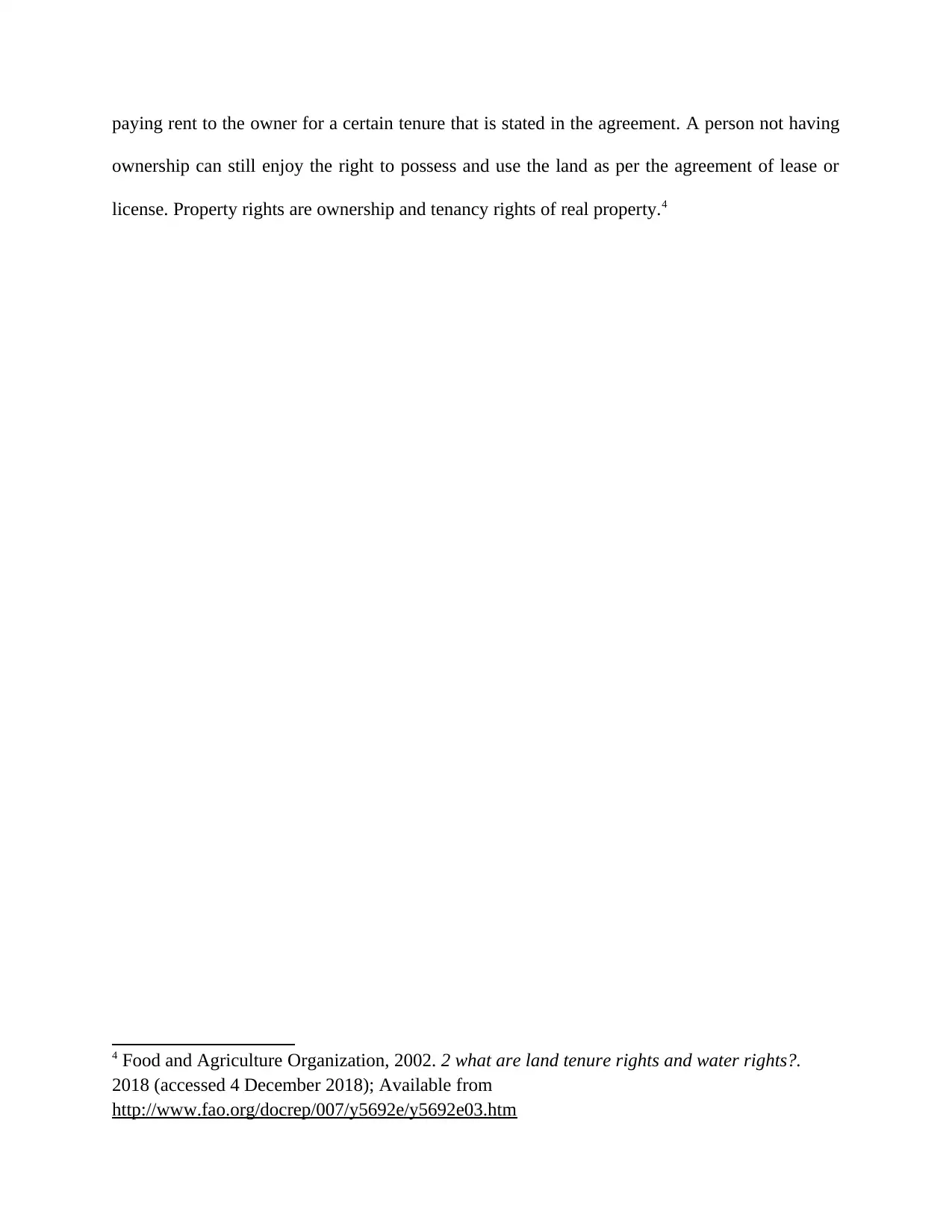Education Law: A Study on Student Records, Dismissal and Tenure Rights
VerifiedAdded on 2023/05/28
|5
|816
|381
Homework Assignment
AI Summary
This assignment delves into key aspects of education law, focusing on student records, dismissal for cause, and tenure rights. It identifies FERPA as the primary federal law protecting student records, distinguishing between covered and non-covered records. The assignment also defines and explains four types of dismissal for cause: fair dismissal, voluntary redundancy, constructive dismissal, and wrongful dismissal. Furthermore, it discusses the property rights associated with the acquisition of tenure, emphasizing the legal relationship between individuals or groups with respect to land ownership and tenancy. Desklib provides a platform to access similar solved assignments and past papers for students.

Education Law
Table of Contents
Table of Contents
Paraphrase This Document
Need a fresh take? Get an instant paraphrase of this document with our AI Paraphraser

1. (a) Identify the primary federal law that protects student records...............................................3
(b) Identify three types of records covered by FERPA law.............................................................3
(c) Identify three types of records NOT covered by said law..........................................................3
2. Identify and define four types of dismissal for cause..................................................................4
3. Discuss the property right associated with the acquisition of tenure...........................................4
(b) Identify three types of records covered by FERPA law.............................................................3
(c) Identify three types of records NOT covered by said law..........................................................3
2. Identify and define four types of dismissal for cause..................................................................4
3. Discuss the property right associated with the acquisition of tenure...........................................4

1. (a) Identify the primary federal law that protects student records.
Students’ records are confidential documents that are protected by the strongest privacy
protection laws - FERPA - The Family Educational Rights and Privacy Act. FERPA was enacted
in 1974 and gives the permission to students and parents the right to confirm, review, and check
the accuracy of their records. FERPA and other privacy laws in USA ensure that the information
of student records collected by the educational institutions are kept secured and released only for
any legal or specific purposes. FERPA applies to all public or state educational institutions that
receive Federal education funds. Both paper and computerized records are protected under this
act.1
(b) Identify three types of records covered by FERPA law.
Education records covers range of information about students that are maintained and recorded
by schools in any medium like print, handwritten, computer, video, audio, microfiche or
microfilm. The types of records covered are personal details of student, parents or guardian’s
address, special education and disciplinary records, medical and health records and identification
records like the social security number, picture, or any other information that will help to identify
the student.
(c) Identify three types of records NOT covered by said law.
The purpose of FERPA is to document, compile and update the student’s education records
which are also known as directory information that covers all personal information according to
school’s student record policy. It does not cover law enforcement records, records that are not
1 NCES, 1997. Protecting the privacy of student education records. 2018 (accessed 4 December
2018); available from https://nces.ed.gov/pubs97/web/97859.asp.
Students’ records are confidential documents that are protected by the strongest privacy
protection laws - FERPA - The Family Educational Rights and Privacy Act. FERPA was enacted
in 1974 and gives the permission to students and parents the right to confirm, review, and check
the accuracy of their records. FERPA and other privacy laws in USA ensure that the information
of student records collected by the educational institutions are kept secured and released only for
any legal or specific purposes. FERPA applies to all public or state educational institutions that
receive Federal education funds. Both paper and computerized records are protected under this
act.1
(b) Identify three types of records covered by FERPA law.
Education records covers range of information about students that are maintained and recorded
by schools in any medium like print, handwritten, computer, video, audio, microfiche or
microfilm. The types of records covered are personal details of student, parents or guardian’s
address, special education and disciplinary records, medical and health records and identification
records like the social security number, picture, or any other information that will help to identify
the student.
(c) Identify three types of records NOT covered by said law.
The purpose of FERPA is to document, compile and update the student’s education records
which are also known as directory information that covers all personal information according to
school’s student record policy. It does not cover law enforcement records, records that are not
1 NCES, 1997. Protecting the privacy of student education records. 2018 (accessed 4 December
2018); available from https://nces.ed.gov/pubs97/web/97859.asp.
⊘ This is a preview!⊘
Do you want full access?
Subscribe today to unlock all pages.

Trusted by 1+ million students worldwide

related to education of the student or any records that are related to race discrimination. All
records maintained are pertaining to the education of the child are secured.2
2. Identify and define four types of dismissal for cause.
Dismissal is the term defined to describe the termination of employment of an employee by an
employer. Dismissal is the last resort for any employer and it must be conducted without any
prejudice. The main four types of dismissal for cause include: Fair dismissal/unfair dismissal,
voluntary redundancy, constructive dismissal, and wrongful dismissal. Fair dismissal is when the
dismissal is sound and justified meaning the employer has fair reasons to dismiss. Voluntary
redundancy is voluntary forwarding. Employee opts for voluntary redundancy to save the hassle
of waiting for job risk. Constructive dismissal is when an employee feels that he is being pushed
out for any reason like nonpayment of salary, being bullied or harassed. Wrongful and unfair
dismissal is more or less the same. It is when employer breaches the terms of contract.3
3. Discuss the property right associated with the acquisition of tenure.
Former property rights are those rights that are explicitly acknowledged by the State and are
protected by legal means. Acquisition of tenure means the right to hold land. Property rights
associated with the acquisition of tenure is basically a legal relationship between people,
individuals or groups with respect to holding land. The leasing or access to land is done by
2 Myers, T. E. & Brackett & Ellis, P. C., 2014. Your Top Ten FERPA Questions - Asked and
(Hopefully) Answered. 2018 (accessed 4 December 2018); Available from
https://www.nsba.org/sites/default/files/reports/Top%2010%20FERPA%20Questions%20Asked
%20and%20Answered.pdf
3 Total Jobs, 2018. Different types of dismissal. 2018 (accessed 4 December 2018);
Available from https://www.totaljobs.com/careers-advice/money-and-legal/different-types-of-
dismissal
records maintained are pertaining to the education of the child are secured.2
2. Identify and define four types of dismissal for cause.
Dismissal is the term defined to describe the termination of employment of an employee by an
employer. Dismissal is the last resort for any employer and it must be conducted without any
prejudice. The main four types of dismissal for cause include: Fair dismissal/unfair dismissal,
voluntary redundancy, constructive dismissal, and wrongful dismissal. Fair dismissal is when the
dismissal is sound and justified meaning the employer has fair reasons to dismiss. Voluntary
redundancy is voluntary forwarding. Employee opts for voluntary redundancy to save the hassle
of waiting for job risk. Constructive dismissal is when an employee feels that he is being pushed
out for any reason like nonpayment of salary, being bullied or harassed. Wrongful and unfair
dismissal is more or less the same. It is when employer breaches the terms of contract.3
3. Discuss the property right associated with the acquisition of tenure.
Former property rights are those rights that are explicitly acknowledged by the State and are
protected by legal means. Acquisition of tenure means the right to hold land. Property rights
associated with the acquisition of tenure is basically a legal relationship between people,
individuals or groups with respect to holding land. The leasing or access to land is done by
2 Myers, T. E. & Brackett & Ellis, P. C., 2014. Your Top Ten FERPA Questions - Asked and
(Hopefully) Answered. 2018 (accessed 4 December 2018); Available from
https://www.nsba.org/sites/default/files/reports/Top%2010%20FERPA%20Questions%20Asked
%20and%20Answered.pdf
3 Total Jobs, 2018. Different types of dismissal. 2018 (accessed 4 December 2018);
Available from https://www.totaljobs.com/careers-advice/money-and-legal/different-types-of-
dismissal
Paraphrase This Document
Need a fresh take? Get an instant paraphrase of this document with our AI Paraphraser

paying rent to the owner for a certain tenure that is stated in the agreement. A person not having
ownership can still enjoy the right to possess and use the land as per the agreement of lease or
license. Property rights are ownership and tenancy rights of real property.4
4 Food and Agriculture Organization, 2002. 2 what are land tenure rights and water rights?.
2018 (accessed 4 December 2018); Available from
http://www.fao.org/docrep/007/y5692e/y5692e03.htm
ownership can still enjoy the right to possess and use the land as per the agreement of lease or
license. Property rights are ownership and tenancy rights of real property.4
4 Food and Agriculture Organization, 2002. 2 what are land tenure rights and water rights?.
2018 (accessed 4 December 2018); Available from
http://www.fao.org/docrep/007/y5692e/y5692e03.htm
1 out of 5
Related Documents
Your All-in-One AI-Powered Toolkit for Academic Success.
+13062052269
info@desklib.com
Available 24*7 on WhatsApp / Email
![[object Object]](/_next/static/media/star-bottom.7253800d.svg)
Unlock your academic potential
Copyright © 2020–2025 A2Z Services. All Rights Reserved. Developed and managed by ZUCOL.





